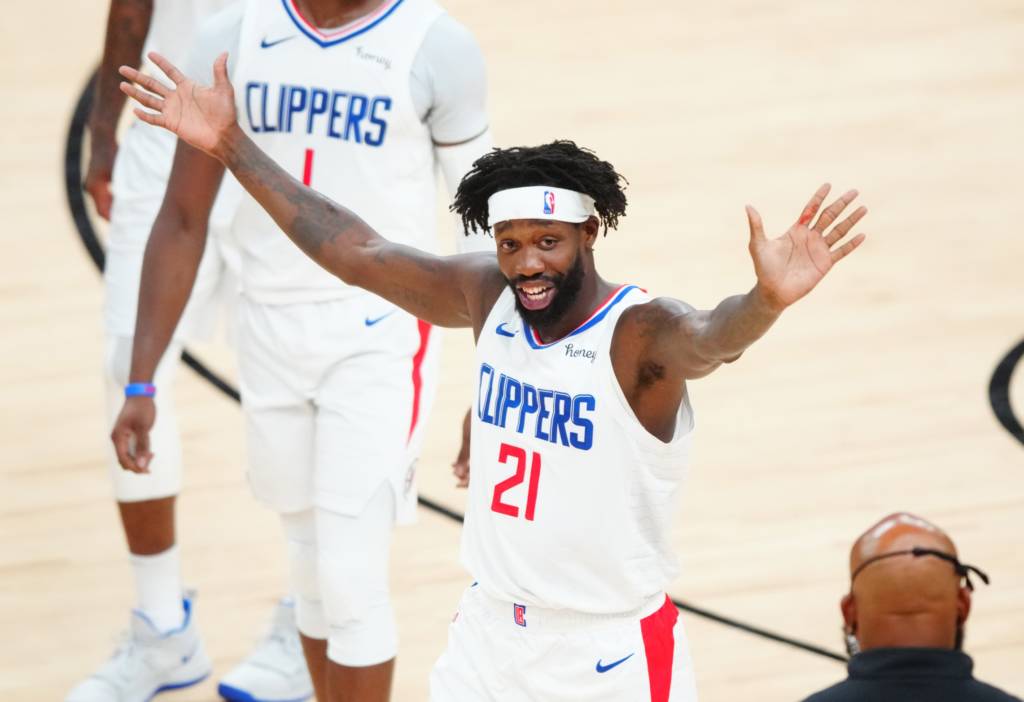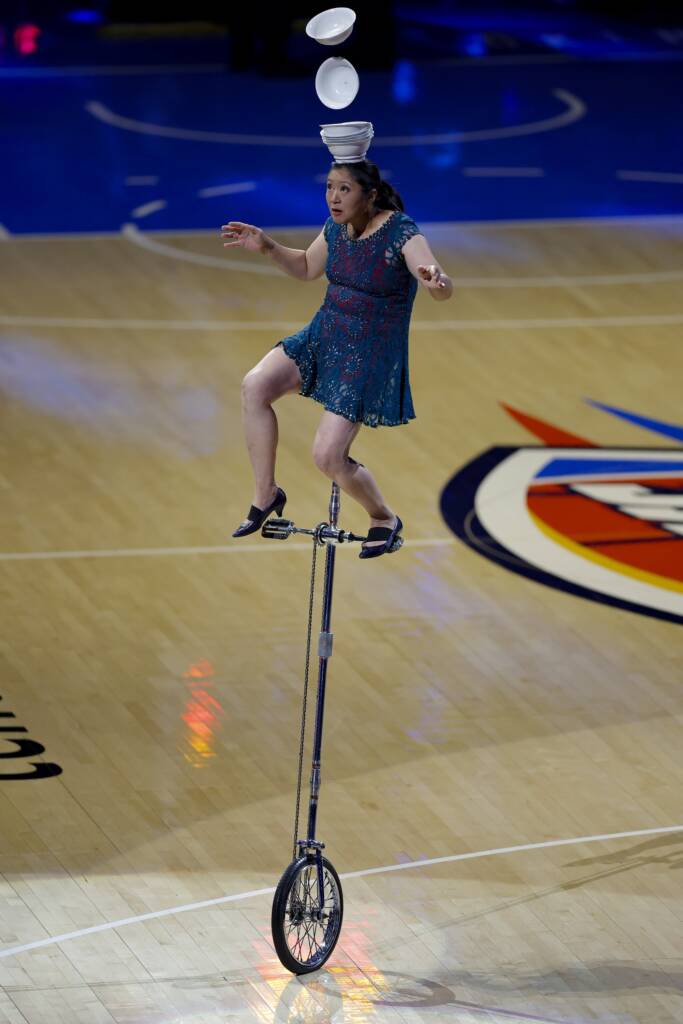It appears that the Minnesota Timberwolves new trade acquisition, Patrick Beverley, has chosen the number he will wear for the 2021-22 NBA season:
The Timberwolves only have two retired numbers: 2, officially, and 21, unofficially. Thanks, Glen.
Beverley has worn No. 21 for the last four seasons with the Los Angeles Clippers, although he would be wise not to pursue wearing that number with the Wolves. Fortunately, he made a quick and easy decision in picking No. 22.
In choosing 22, Mr. Beverley is attempting to blaze an intrepid path of glory down what is currently a harrowing road of memories. The previous Timberwolves players to wear 22 have largely failed to impress. With a mixture of one-off players and otherwise non-impact guys, No. 22 in Minnesota does not have the historical pedigree of a number, such as whoever winds up wearing the No. 10 jersey for FC Barcelona next.
Oftentimes, this isn’t even a discussion in American sports. Teams elect to retire numbers rather than carry on traditions of franchise pillars wearing iconic numbers. Until a player changes the team trajectory or transcends into the ethereal realm of global fame, numbers remain recyclable like those little aluminum cans we throw in the blue bin after a long week at work. This often leaves North American players with two paths: break decades of mediocrity, or join the club.
Beverley will certainly have shoes to fill wearing No. 22. They are not big shoes, but there are 10 pairs of them. Let’s take a brief look at some of the legacies that will be carried on by Minnesota’s new No. 22.
Gerald Glass
Gerald “World Class” Glass was one of two Timberwolves’ first-round selections in the 1990 NBA draft. A highly-touted guard out of Ole Miss, Glass was one of the foundational players to a young and upstart Minnesota basketball franchise.
For his first number, he chose 22. Glass wore No. 4 during his time at Ole Miss, but that number was being worn by Tod Murphy in the 1990 season. If I were a betting man, I would assume that the thought process behind 22’s selection involved addition of some sort being the next best thing. Then again, I teach English.
Glass’ age-23 rookie season did not live up to the hype. He only averaged 12 minutes per game and scored 6.9 points per game in 51 contests. This was all for a Timberwolves team that went 29-53 under Tom Thibodeau’s assistant coaching tutelage, which is not exactly a ringing endorsement of success.
Murphy became the first-ever Timberwolves player to wear No. 9 the following season. Surely sick of 22, Glass switched to his familiar No. 4 and doubled nearly every statistical category from his rookie season. No. 22 was off to a rip-roaring start in Timberwolves lore.
Tom Garrick
The next guy in line to wear 22 lasted all of 15 games. The Timberwolves picked up Garrick, a shooting guard out of Rhode Island, on waivers in the middle of the 1992 season. Garrick had recently been waived by the San Antonio Spurs, and the Wolves took a flier on him.
Garrick had a hard time cracking the rotation for the eventual 15-67 Timberwolves team. Averaging 1.9 PPG on 33% shooting over his 15 games, Garrick was eventually waived. He was eventually picked up by the Dallas Mavericks, who only let him play in six games.
Garrick never played in the NBA again. Minnesota was then 0-for-2 on getting quality play out of 22.
Dean Garrett
Garrett was the first Timberwolves player to wear the 22 for more than one season. He spent his 20s overseas and joined the Wolves as a 30-year-old rookie in 1996. He had a one-year cameo with the Denver Nuggets during the 1998 season but returned to Minnesota and rocked the 22 from 1997 to 2002. His rookie NBA season was solid: He played in 68 games and averaging 8.0 PPG and 7.3 RPG.
Garrett had spent the previous seven seasons playing professionally in Italy and Greece despite being drafted by the Phoenix Suns in 1988. He then had a unique path in the NBA: After signing a one-year deal for the Timberwolves in 1997, the Nuggets signed Garrett in 1998, only to trade him back to Minnesota the following season.
Garrett saw his minutes dwindle in his last few seasons in Minnesota before eventually being traded to the Golden State Warriors, where he played five more games in the 2001-02 season before his career was over. Garrett was an integral front-court member during the early Kevin Garnett years, endearing him to many fans of the Timberwolves as the team was starting to find a footing in the NBA. This was the first instance of an impact player wearing No. 22.
Corey Brewer
While he eventually returned and hung a 50-burger in the number 13, a young Corey Brewer rocked the 22 for Minnesota from 2008-11. Taken with the seventh overall pick in the 2007 draft, Brewer played six seasons in Minnesota in some capacity, four of which were in the number 22. Despite never quite living up to his lofty draft status, Brewer enjoyed a long career in the NBA and is fondly remembered by many Timberwolves fans.
Andrew Wiggins
The memory of Wiggins is perhaps what Timberwolves fans are most hoping to have taped over with Beverley coming to town. Memories, in this case, involve the hopes and dreams of Minnesota basketball, the weight of which were both squarely on the shoulders of Wiggins from the moment the Cleveland Cavaliers traded him to the Wolves. Wiggins never reached his immense potential in Minnesota, and the record books have plenty of losses to show for it.
Of course, this is not as much of Wiggins’ fault himself as it was an unfortunate circumstance. The front office gave the captain’s armband and megaphone to a player and personality who should never have had them in the first place. Despite showing some of the best basketball talent and athleticism since LeBron James, the soon-to-be patented Wiggins brand of nonchalance and lack of ferocity wore out the fanbase’s patience with the worst win-loss percentage in the NBA. In some ways, that in and of itself is an accomplishment.
Statistically, Wiggins put up great numbers during his time in Minnesota, and he earned every bit of his Rookie of the Year award in 2014. However, his time with the Timberwolves will be remembered for the losing seasons, lack of leadership, and failure to improve. You can only be a great person for so long before you need to contribute to a winning culture. Wiggins provided an optimism buff hope that had diminishing returns for each season until his eventual trade to the Warriors.
The No. 22 will carry that weight until proven otherwise. Fortunately, the Timberwolves appear to be acquiring a player that has an opportunity to rewrite Minnesota history. It is almost a blessing that Beverley chose the number that he did.
Beverley’s personality and on-court demeanor could not be more different from Wiggins’s. Bev brings a fire that will incinerate the paper-mâché skeleton of Wiggins’ failures in Minnesota’s closet. With a make-or-break season coming, Wolves fans will gladly embrace a player that outwardly, pardon my French, gives a heck.
Let’s hope that fire doesn’t burn down the whole Target Center like Jimmy Butler’s ego did.

